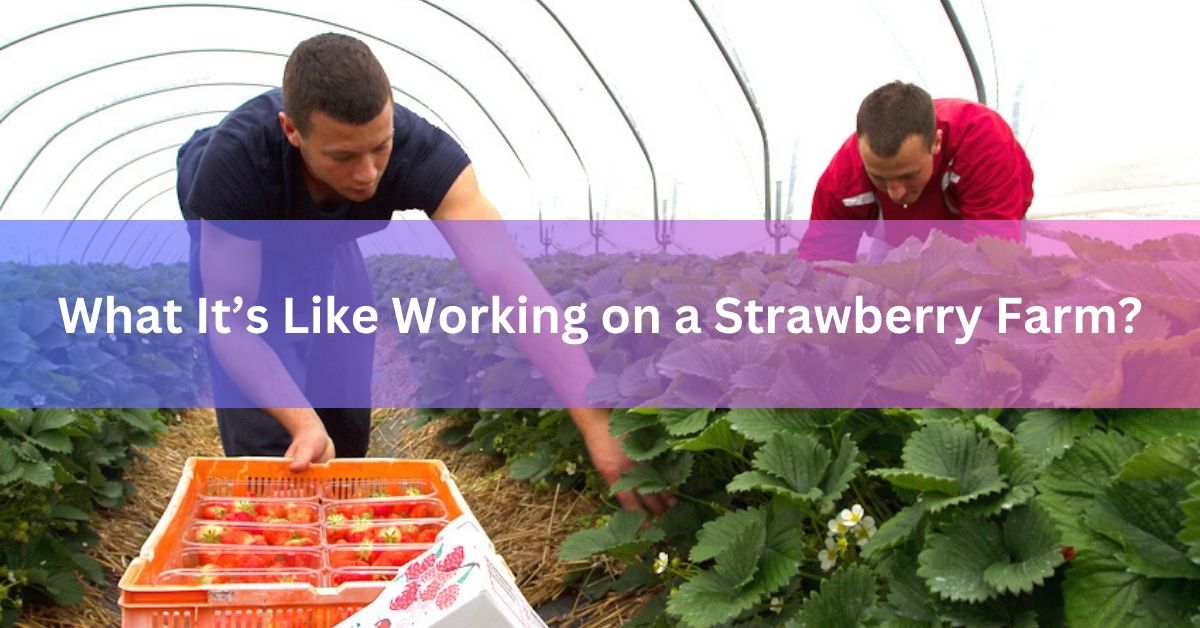What It’s Like Working on a Strawberry Farm
Strawberry farming is a labor-intensive process from planting to harvesting. Farmers must pay close attention to detail to grow a good yield of delicious berries. Some farms use organic farming, which helps conserve the soil and the environment. Here is what it’s like working on a strawberry farm:
Planting and Cultivating
A typical day in strawberry farming starts early in the morning. Farmers show up before dawn and work till sunset during the peak season. The planting process begins with selecting high-quality seeds or runners. Strawberry farmers plant each of these seeds, ensuring proper spacing in nutrient-rich soil. They monitor the soil’s pH level, maintaining it between 5.8 and 6.2, optimal for strawberry growth.
Farmers inspect each plant, looking for diseases and pests. They manage weeds and pests as plants grow using sustainable methods such as crop rotation and biological control. Crop rotation aids in preserving soil fertility and reducing pest infestations. Biological control involves using natural predators to curb pests. They also cultivate using hoes or by hand, pulling the weeds.
During the Harvest
While some farms employ machinery for fruit picking, most strawberry picking is still done by hand. Harvest takes long hours, and it can sometimes be challenging in the summer months when the heat waves begin.
Strawberry farms employ selective harvesting, which involves picking only the ripe strawberries from the plant, leaving the unripe ones for subsequent harvests. Using this method means that all the strawberries are at their peak ripeness and flavor when picked. Selective harvesting requires multiple rounds of picking throughout the season.
During the harvest, workers move from row to row, gently twisting the ripe berries from the plants. This process is done to avoid bruising or damaging the fruit. Each worker carries an aerated tray or container where they place the harvested strawberries. Immediately after the harvest, farmers take the strawberries to a cooling facility, where they are quickly chilled to maintain their freshness and slow down the ripening process. The fruits are then sorted and packed into containers for transportation.
The Unexpected Challenges
Many unexpected challenges come to the farm throughout the year. Farmers have to be ready for them to protect their crops. Here are a few examples:
Cold Fronts
The weather can be unpredictable, and extreme temperatures can damage strawberry plants and fruits. Farmers have different practices they use to avoid problems when these challenges arise. They use cover cropping or plastic to help cover the strawberries and protect them if the temperatures drop too much.
Extreme Heat
Drought can mean needing alternative ways for watering the strawberries, while flooding can also damage the plants. This is where drip systems to the roots and collecting rainwater help keep the plants watered and healthy.
Unwanted Pests
Farmers must also take preventive measures to protect their plants from pests and diseases. There are times when swarms of bugs move into the area, and the farmers must be ready to protect their berries. They employ bug vacuums and natural predators like the praying mantis to keep those pests away from the strawberries.
Support Strawberry Farming Today
Working on a strawberry farm is marked by early mornings, careful planting, sustainable cultivation methods, and a rigorous harvesting process. This labor-intensive industry faces unpredictable weather, pests, and diseases. Farmers must also adhere to high-quality standards. The result is the delivery of succulent, ripe strawberries to the market. By understanding the hard work and commitment that goes into strawberry farming, you can fully appreciate these delicious berries and the farmers. Visit a strawberry farm today and experience the magic of strawberry farming.




